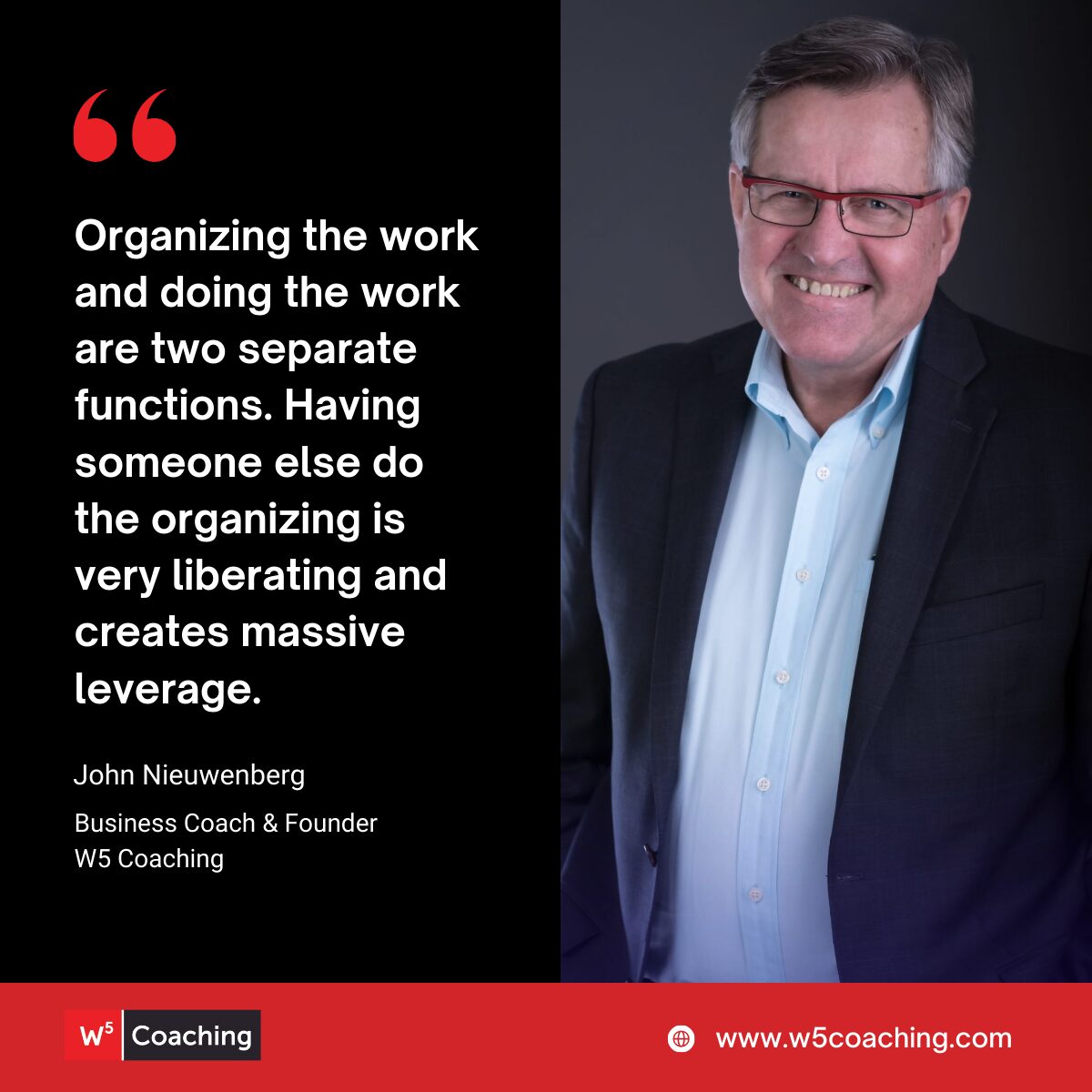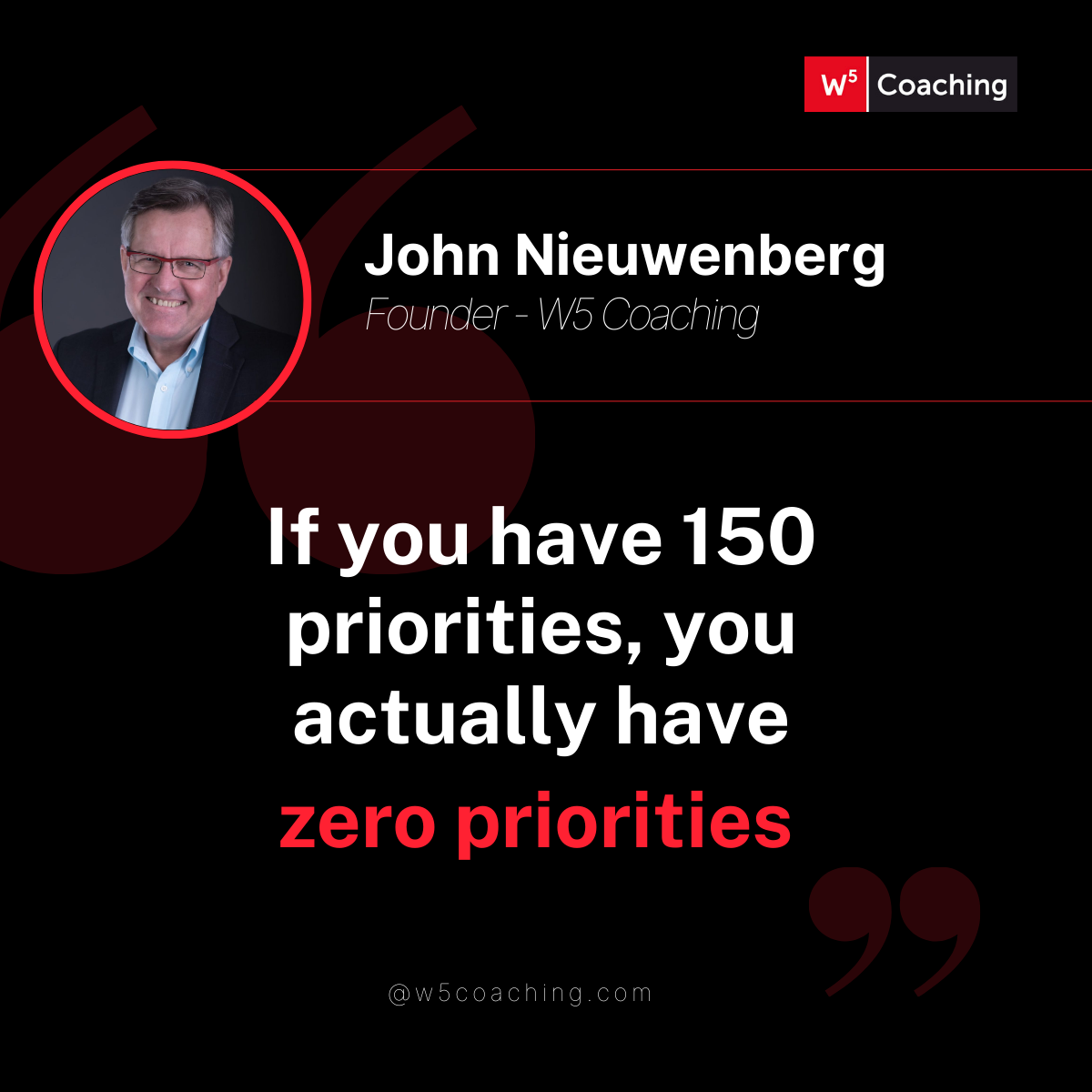Lessons from a CEO: Five Insights for Small Business Owners

In my career before I became a business coach, I was CEO of the BCLDB, a multi-billion-dollar corporation.
Here are five valuable insights I learned during that experience that are directly applicable to running a successful small business.
Lesson One: The Value of a Personal Assistant
 At first, I found it intrusive to have someone filter through my mail and answer my calls.
At first, I found it intrusive to have someone filter through my mail and answer my calls.
I felt it was silly that someone couldn’t reach out to me without going through a gatekeeper.
But – it wasn’t long before I realized how helpful it was to have a filtering system.
It helped me avoid constant disruptions – all the ringing, pinging, and dinging of people trying to get to me.
I also recognized that work can often be separated into two functions.
One is the organizing of the work – filtering what’s important and what’s not important.
Then there’s the actual doing of the work.
Having someone else do the organizing is ultimately very liberating and creates massive leverage for the executive.
Your takeaway:
As the business owner, you should only be doing the things that you, the owner, can do. Get a VA to do the filtering.
Lesson Two: Your Job is Chief Communications Officer
A better name for a CEO might be Chief Communications Officer.
A strategic plan is 5% vision and 95% alignment.
My role as CEO primarily involved making sure that everyone knew where we were going and what was expected from them to get there.
This meant developing a clear message and repeating it over and over again in meetings, presentations, and one-on-ones.
Your takeaway:
Your job as a business owner is to align everyone on your team behind a common purpose.
Lesson Three: The Importance of Setting Priorities
 When I took over as president, the company was juggling more than 150 different process improvement projects.
When I took over as president, the company was juggling more than 150 different process improvement projects.
The whole place was stuck because all 150 required about the same three dozen people for their budgets and their time.
One of the first things I did in my role was to clarify the 4 things that really mattered.
Then I gathered everyone together and said, if you’re on a project that isn’t related to one of these four things, stop.
Your takeaway:
When you have 150 priorities, you actually have zero priorities. Decide what is important and focus on that. Eliminate the distractions.
Lesson Four: The Power of Delegation
Business growth stops when the owner gets stuck in the hub and spoke model. When you know how to do everyone’s job, it’s easy for your staff to see you as the go-to person for every question.
It’s a very different situation when you step into a new role as a CEO.
You can’t possibly understand the nuances of every role within your company, nor should you.
You have to trust your team and give them the autonomy to act in the best interests of your business.
Once I recognized that I couldn’t micromanage every aspect of the business, I focused on two things: holding my team accountable for results and upholding the company culture.
This approach allowed me to trust my team to deliver while maintaining a balance between oversight and autonomy.
It also allowed my team members to grow since they were taking ownership of their results.
Your takeaway:
See your role as the leader of your company and learn how to delegate like an executive.
Lesson Five: Start with the Bottom Line
Before I became an executive, I had a tendency to share too much detail and background information. (I learned this lesson the hard way the first time I ever presented to a CEO.)
Executives appreciate a bottom-line up-front (BLUF) approach.
Tell them what time it is – don’t explain how you made the watch.
If they want more details, they will ask.
This saves time and makes it possible to make informed decisions without getting bogged down by unnecessary details.
Your takeaway:
Coach your team to get to the point quickly and ask for what they need clearly. If they bring you problems, ask them to being solutions as well.
If you want to take your business to the next level, you need to become a next level leader
At W5 Coaching, we say that if the owner wants a better business, first the business needs a better owner.
Becoming a better owner begins with an identity-level shift: you need to step into the role of leader in your business.
When you implement the 5 takeaways from above, you can expect a massive change in both yourself and your business.
If you’d like to speed up the process with some support from an experienced business mentor, click here to book a free 15-minute call to discuss coaching: book a call with John

Build a Self-Managing Company
How to build a business that runs smoothly, profitably, and (mostly) without you.
Feeling stressed out and overwhelmed with a business that is taking all your time - and not giving you enough in return?
Are you finding it challenging to hire the right team (and get them to do the right things)?
I wrote this little guide for you!
Enter your details below to receive your free copy!
